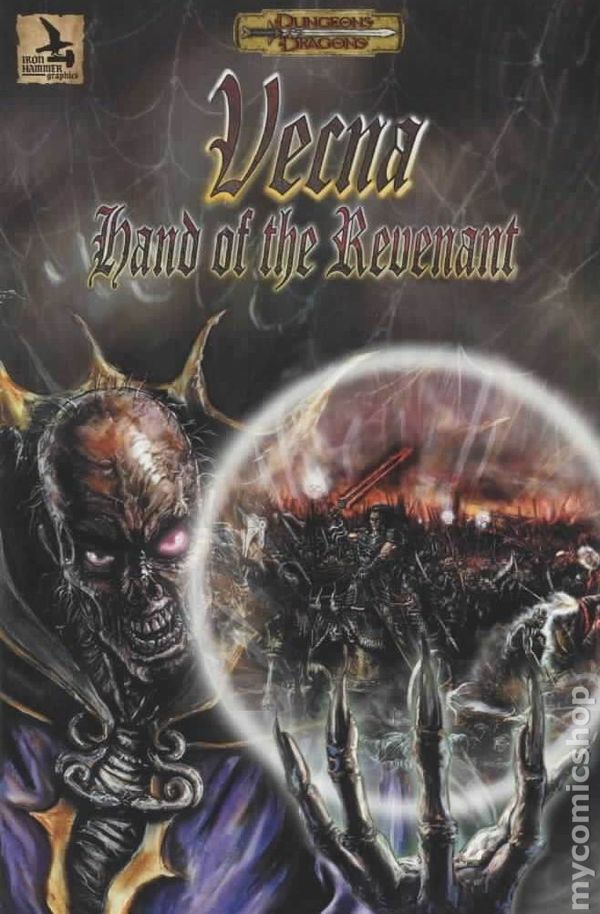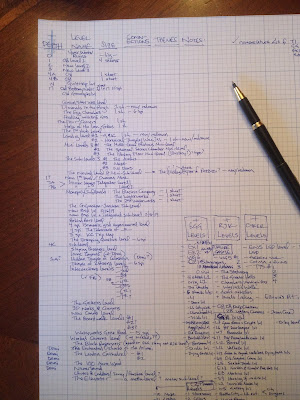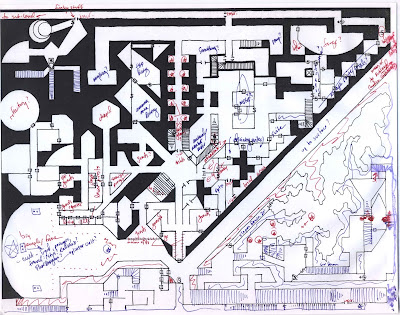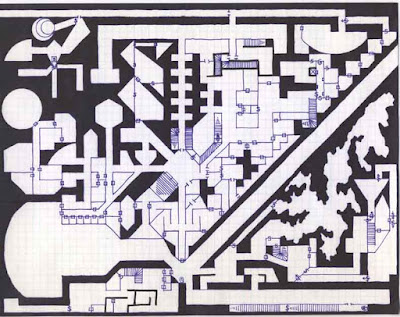There are many Greyhawk rarities well-worth digging into. Some add significant lore to the setting, while others are simply solid Greyhawk adventures that are fun to run and play. Some are old, rare, obscure, and very difficult to find, while others are hot-off-the-presses and being actively published by fans today!
What Greyhawk Rarities?
The first question* to ask about this topic may be, "How does Allan (or anyone else) know what constitutes a rare item in the world of Greyhawk publishing?"Well, Ant "Echohawk" Brooks maintains a Greyhawk Collector's Guide on ENWorld, and it's amazingly comprehensive. I link to it on my Greyhawk Links page, and while there are still bits and pieces of info that trickle in with new discoveries, new versions or editions of books, additional Living Greyhawk tourney scenarios catalogued, and new titles written by and for Greyhawk fans being published each year, Echohawk's work is my go-to guide whenever I want to dig into the history of Greyhawk publishing over the decades.
I've written about some of these curios here and there in my web site, and in some previous blog articles, and some of these items are somewhat better-known or are already well-documented, but I may still touch on some of them, either in passing, or directly:
- "The Lost Caverns of Tsojconth" is Gygax's 1976 tourney from Wintercon V and the precursor to TSR's 1982 S4 The Lost Caverns of Tsojcanth:

Gary Gyga's 1976 WinterCon V tournament,
The Lost Caverns of Tsojconth
I've written extensively about both versions---see http://greyhawkonline.com/grodog/gh_s4.html and http://www.greyhawkonline.com/grodog/gh_s4_encounters.html in particular and have some new research to reveal about its development soon, too! - "Quest for the Golden Orb" - an Origins 1984 Greyhawk tournament written by Elaine Walquist:
"Quest for the Golden Orb"---
1984 Origins tourney - Empire of the Ghouls - 2008 Open Design campaign module by Wolfgang Baur, and sequel to his "Kingdom of the Ghouls" from Dungeon #70:
Wolfgang Baur's 2008 Open Design project,
Empire of the Ghouls
- The 1975 Origins I version of "Tomb of Horrors"---which was reprinted as part of the deluxe edition of Art & Arcana (the Gygax tourney, not the
Alan Lucien original---although I am familiar with that as well):

1975 Origins I "Tomb of Horrors" booklet,
Art & Arcana special edition - Rob Kuntz's various projects from Creations Unlimited and Pied Piper Publishing up through his current books and projects with Three Line Studios:

Rob Kuntz's prodigious publishing!
- RPGA Adventurer's Guild scenarios from the TSR Silver Anniversary and "Greyhawk 98" revivals
- "Finger of the Wind" GenCon 2000's D&D Open tourney by Robert Weise
What's in the Vaults?
So, to kick this particular series off, I'm going to focus (sometime next week) on Carl D. Perkins' "In Quest for the Hand of Vecna"---a non-TSR adventure self-published in 1984.I'd already begun drafting this article when Mike Bridges announced an upcoming Vecna movie (!), so the timing seems quite good.
 | |
| In Quest of the Hand of Vecna!, by Carl D. Perkins |
Here are some other Greyhawk titles that I will probably dig into in the series:
- Return to the Tomb of Horrors flyer "The Catacombs of the Necromancers" and other TSR Gold late-2e promotional retail items
- The graphic novel, Vecna: Hand of the Revenant by Modi Thorsson (Iron Hammer Graphics, 2002):

Vecna: Hand of the Revenant,
by Modi Thorrson
- The Fist of Emirikol and Olidamarra Dice from Wizards of the Coast
- True Dungeon's various early (2003-2007) World of Greyhawk-based scenarios
- The various RPGA DM Rewards and D&D Encounters scenarios published by Wizards of the Coast during the 4e era: Tomb of Horrors, Village of Hommlet, Beyond the Crystal Cave, etc.
So, take a look at the stuff I've mentioned in here, and in Echohawk's Guide, and what you already know about that I don't, and chime in via the comments to let me know which titles most-catch your eye: I'll prioritize the wriring accordingly if I own the books already and/or have detailed information on them, of course (and if they sound very interesting, they'll go into my "to hunt for" list =) )!
Allan.
* beyond the obviously cynical, "Does Allan really need to start yet-another blog series?" ;)










*I'm also not jumping down the rabbit hole of Rob Kuntz's "open forms" book concept yet, but that is a quite possibly an ending point for this analysis, I suppose.